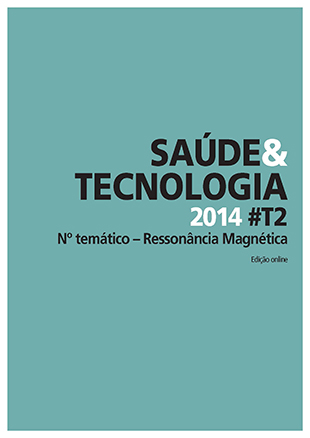Development and measurement of the transverse diameter of the fetal cerebellum by MRI
DOI:
https://doi.org/10.25758/set.1064Keywords:
Fetal magnetic resonance, Cerebellum, Biometry, Transversal diameterAbstract
Fetal magnetic resonance imaging (MRI) is an effective method in the prenatal evaluation of normal brain morphology and diagnosis of diseases of the central nervous system. It is an important complement to clinical ultrasound. The cerebellum is one of the least affected structures in cases of fetal growth restriction, so it is a good index for evaluating fetal development and gestational age. Thus, biometric evaluation is essential in fetal prenatal diagnosis of brain development. Purpose – Evaluation of the transversal cerebellum diameter (the anatomical structures reference of the fetal central nervous system) and compare it with an international reference study in this regard. Material and methods – The sample consisted of 84 pregnant women who have performed magnetic resonance in a medical imaging clinic in the Centre region. The average considered for evaluating fetal development was the transversal cerebellum diameter. Results – The results for the transversal cerebellum diameter demonstrate the absence of statistically significant mean differences (p>0.05) in the number of weeks of gestation compared with theoretical values measured in the study by Garel. Conclusion – Based on the obtained results we can conclude that the parameter analyzed is consistent with the publication of Catherine Garel – Le développement du cerveau foetal atlas IRM et biometrie.
Downloads
References
James JR, Khan MA, Joyner DA, Gordy DP, Buciuk R, Bofill JA, et al. MR biomarkers of gestational age in the human fetus. Magnetom Flash. 2012;(1):112-8.
Coakley FV, Glenn OA, Qayyum A, Barkovich AJ, Goldstein R, Filly RA. Fetal MRI: a developing technique for the developing patient. Am J Roentgenol. 2004;182(1):243-52.
Grossman R, Hoffman C, Mardor Y, Biegon A. Quantitative MRI measurements of human fetal brain development in utero. Neuroimage. 2006;33(2):463-70.
Department of Radiology. Fetal MRI: a developing technique for the developing patient. San Francisco: University of California; 2003.
Ximenes RL, Szejnfeld J, Ximenes AR, Zanderigo V. Avaliação crítica dos benefícios e limitações da ressonância magnética como método complementar no diagnóstico das malformações fetais [A critical review of benefits and limitations of magnetic resonance imaging as a complementary method in the diagnosis of fetal malformations]. Radiol Bras. 2008;41(5):313-8. Portuguese
Nagae LM, Baroni RH, Funari MB. Fetal magnetic resonance imaging. Einstein (Säo Paulo). 2009;7(3 Pt 1):390-1.
Glenn OA. MR imaging of the fetal brain. Pediatr Radiol. 2010;40(1):68-81.
Ganesh Rao B, Ramamurthy BS. Pictorial essay: MRI of the fetal brain. Indian J Radiol Imaging. 2009;19(1):69-74.
Scott JA, Habas PA, Kim K, Rajagopalan V, Hamzelou KS, Corbett-Detig JM, et al. Growth trajectories of the human fetal brain tissues estimated from 3D reconstructed in utero MRI. Int J Dev Neurosci. 2011;29(5):529-36.
Holanda Filho JA. Determinação ultra-sonográfica da idade gestacional pelo diâmetro transverso do cerebelo [Dissertation]. Recife: Instituto Materno-Infantil Prof. Fernando Figueira; 2008.
Garel C, Brisse H, Hassan M, Sebag G, Elmaleh M. Le développement du cerveau foetal: atlas IRM et biometrie. Sauramps Médical; 2000. ISBN 9782840232452
Downloads
Published
Issue
Section
License
Copyright (c) 2022 Saúde e Tecnologia

This work is licensed under a Creative Commons Attribution-NonCommercial-NoDerivatives 4.0 International License.
The journal Saúde & Tecnologia offers immediate free access to its content, following the principle that making scientific knowledge available to the public free of charge provides greater worldwide democratization of knowledge.
The journal Saúde & Tecnologia does not charge authors any submission or article processing charges (APC).
All content is licensed under a Creative Commons CC-BY-NC-ND license. Authors have the right to: reproduce their work in physical or digital form for personal, professional, or teaching use, but not for commercial use (including the sale of the right to access the article); deposit on their website, that of their institution or in a repository an exact copy in electronic format of the article published by Saúde & Tecnologia, provided that reference is made to its publication in Saúde & Tecnologia and its content (including symbols identifying the journal) is not altered; publish in a book of which they are authors or editors the total or partial content of the manuscript, provided that reference is made to its publication in Saúde & Tecnologia.







